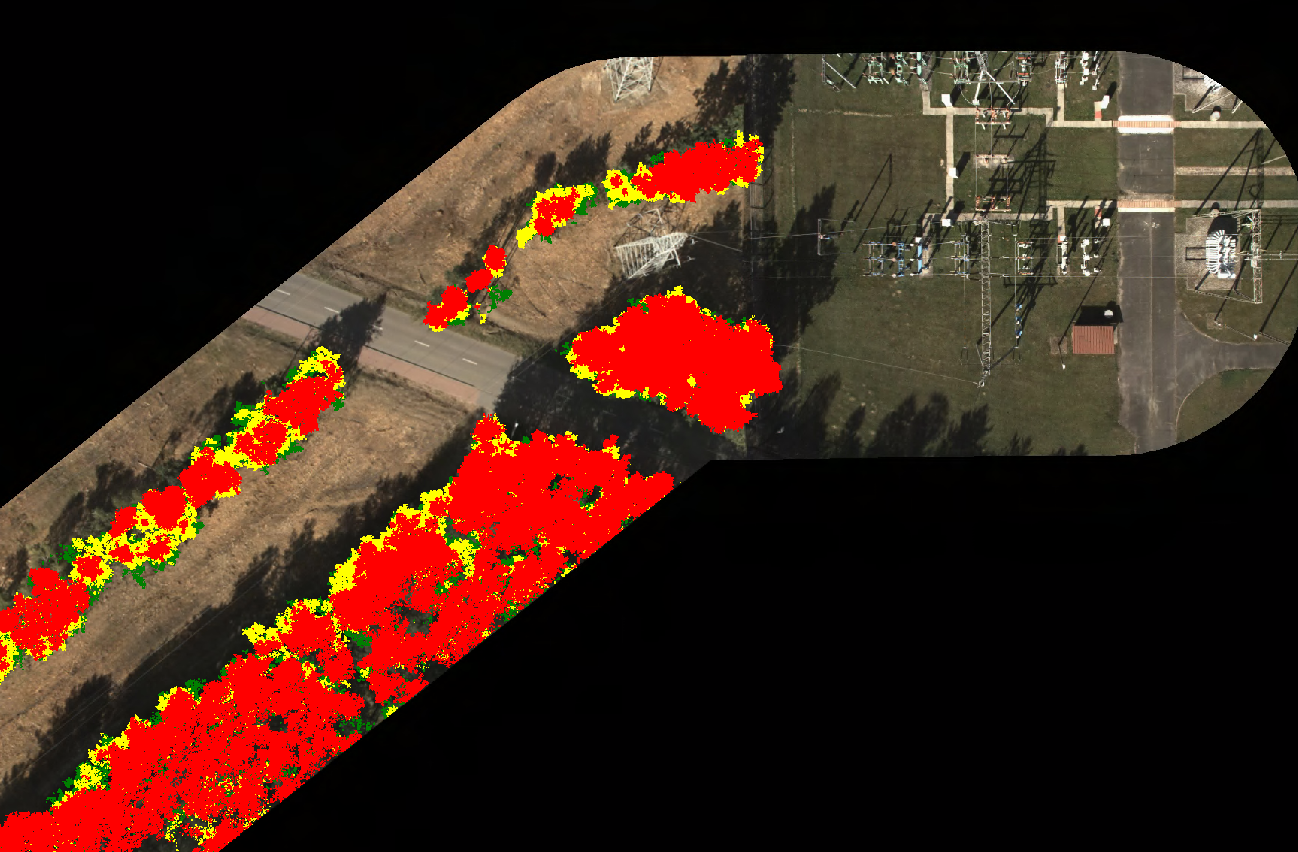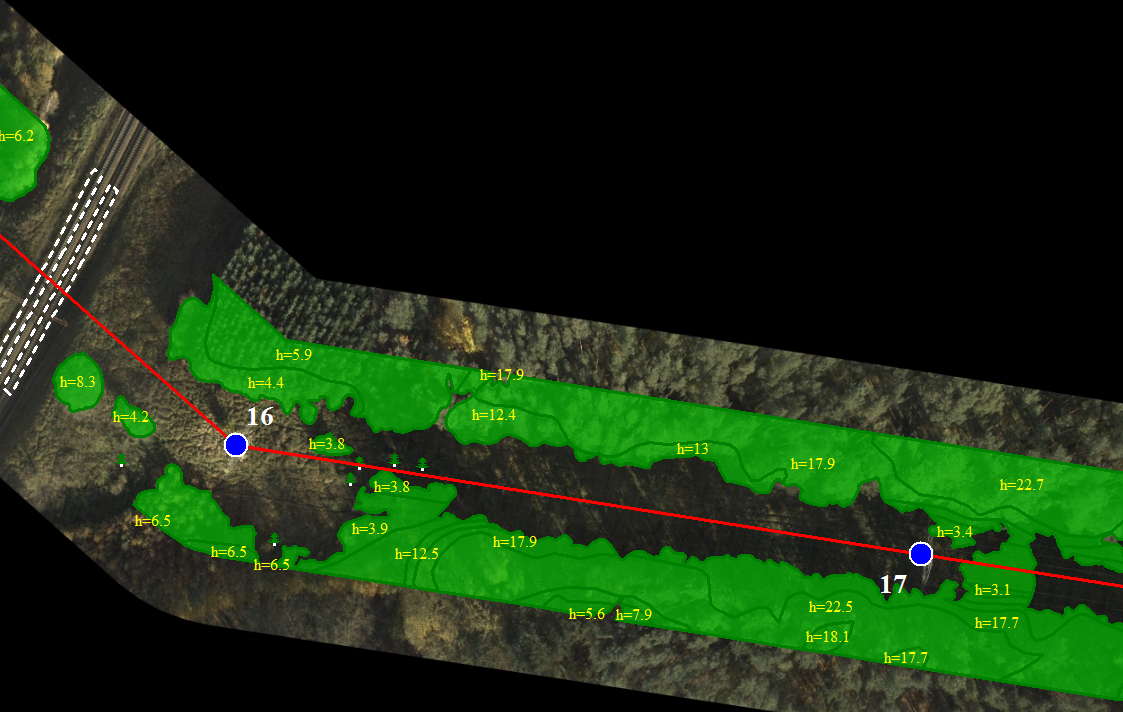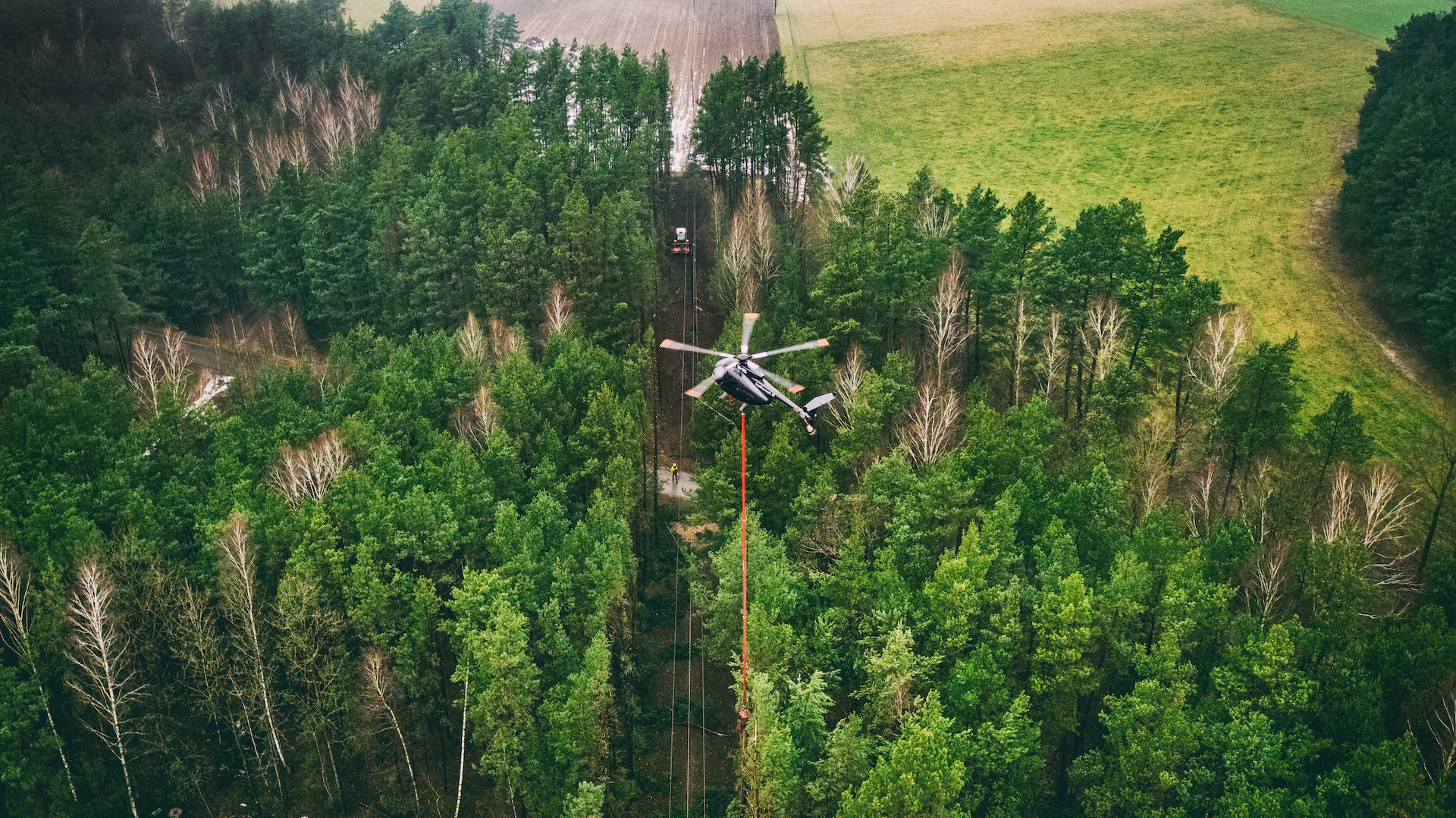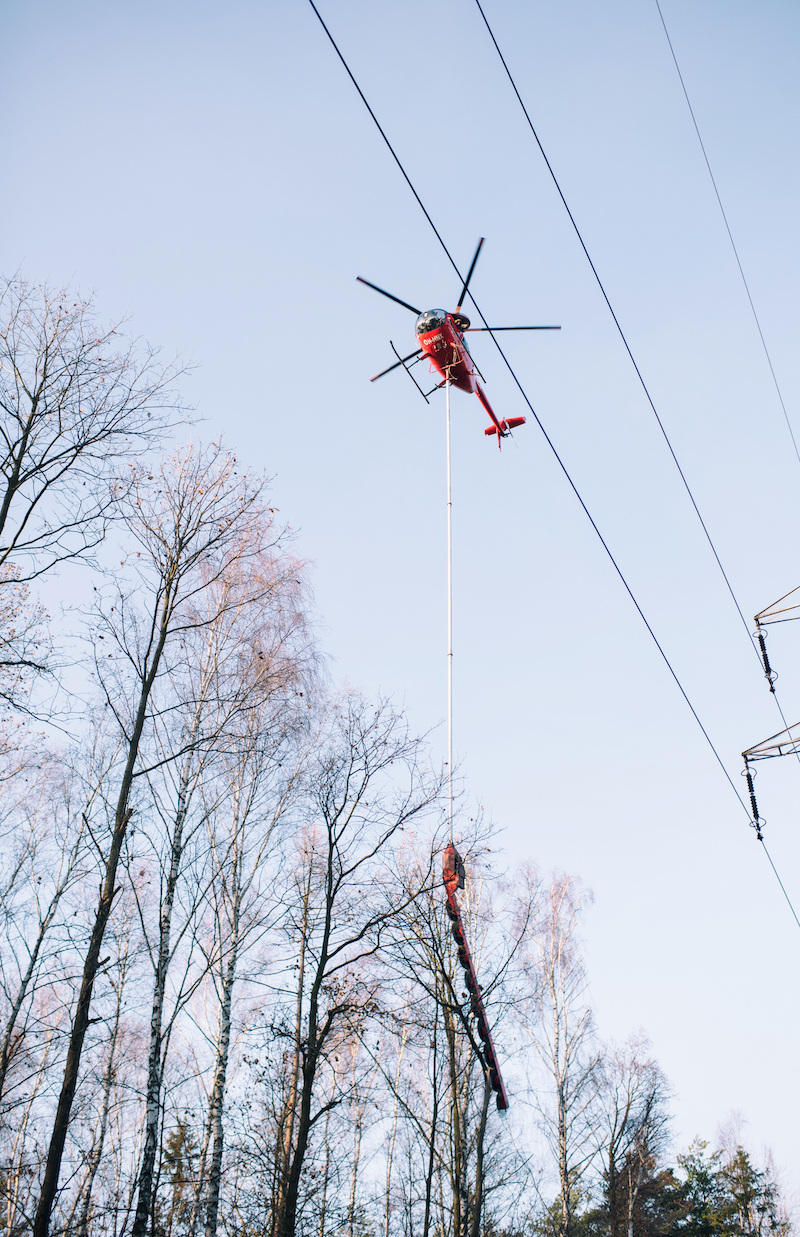GAMUZA TECHNOLOGY
Airborne laser scanning “LIDAR” carried out after felling helps to verify that the job was done correctly. The system indicates where the vegetation is still close to the line and generates a list thereof in the control report. Thus no shortcomings can occur in the execution process.
The LIDAR (Light Detection and Ranging) system acquires data in the form of a point cloud, which the recording device reads from a laser beam reflected from the surface. LIDAR is mounted like a camera, just outside the helicopter. In addition to the scanner itself, the LIDAR includes an INS inertial system consisting of advanced gyroscopes and accelerometers, and a GPS positioning system.


GAMUZA TECHNOLOGY
GAMUZA TECHNOLOGY
In fact, it was Gamuza that introduced the technology of logging that uses helicopters to remove cut trees with a hovering saw in 2018. This method is extremely efficient compared to traditional methods. An hour of work of the helicopter, which will cut a greenery corridor along 1 km of the line, is equivalent to the work of about 120 employees with no machine.
Throughout the day, our helicopter trims tree crowns over a length of 4-6 km at full forest cover. Thus, it prevents long-lasting shutdowns of transmission lines and is more environmentally friendly as this method does not damage the trees.
Currently, this technology is only used in a few countries in the world, including the USA, Finland, Sweden and Norway. There are also few pilots who have proper training and qualifications for this type of logging. The saw weighs 400-600 kg, and a specialised pilot can cut trees down to a few centimetres with high precision.
Obtaining permits for the helicopter, organising the helipad and refuelling facilities, and securing the site is an extremely difficult logistical challenge. The helicopter needs to be refueled every hour, cannot fly in fog or when the wind speed exceeds 38 km/h.


